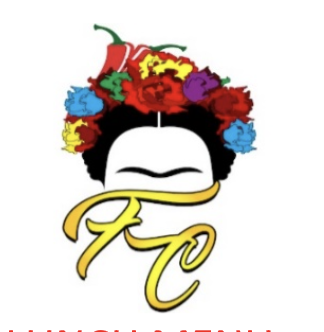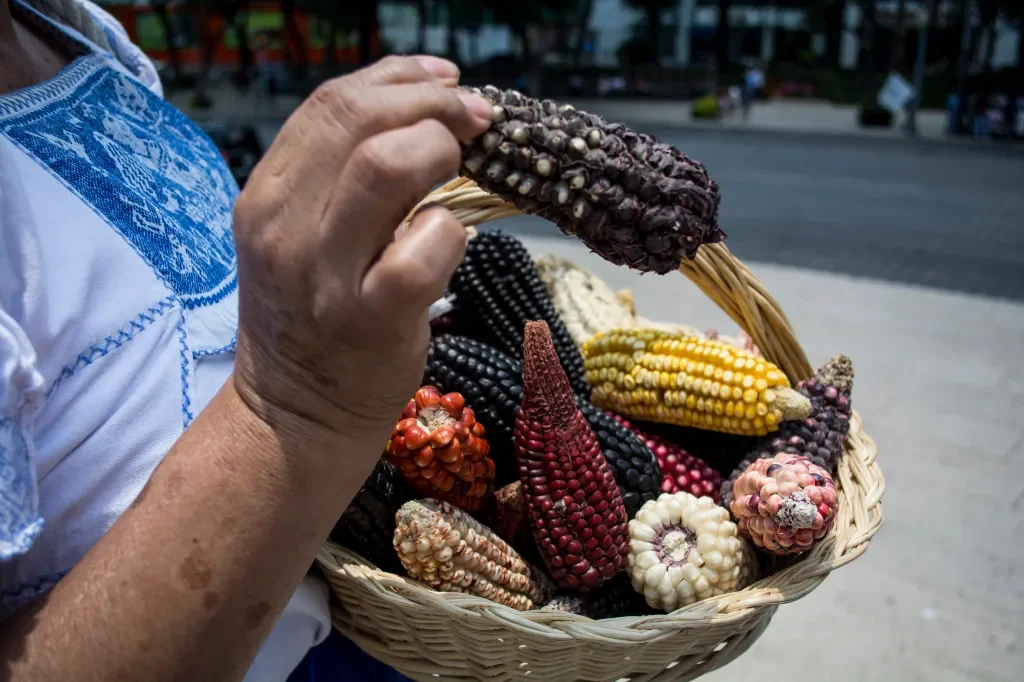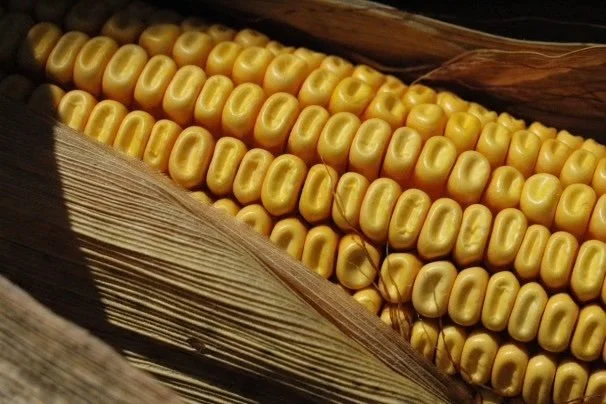The Sacred Corn: Exploring Heirloom Varieties and Their Unique Flavors
For thousands of years, corn has stood as more than just a staple crop—it has been a sacred gift, a cultural cornerstone, and a testament to the incredible biodiversity that once flourished across the Americas. Today, as we rediscover the rich tapestry of heirloom corn varieties, we're not just exploring different flavors; we're connecting with an ancient heritage that shaped civilizations and continues to nourish both body and soul.
The Remarkable Journey from Wild Grass to Sacred Grain
The story of corn begins with one of agriculture's most extraordinary transformations. Around 9,000 years ago in the highlands of southern Mexico, indigenous farmers began domesticating teosinte, a wild grass that looked nothing like modern corn. This primitive plant produced only about a dozen tiny, hard kernels encased in tough shells—yet through generations of careful selection, these ancient agriculturists achieved what could arguably be called humanity's first successful genetic engineering project.
Here's a remarkable fact: The genetic difference between teosinte and modern corn involves just five genes, despite the dramatic physical transformation. Each teosinte plant yielded merely 5-12 kernels, while modern corn ears can contain 600-1,000 kernels. This transformation represents one of the most dramatic examples of crop domestication in human history.
the maize progenitor, teosinte
What makes this achievement even more astounding is that corn became genetically 15 times more diverse than the human genome. Researchers have identified over 100,000 unique genes across just 26 corn varieties, even though each individual plant contains about 40,000 genes. This incredible genetic diversity has allowed corn to adapt to virtually every climate and elevation where humans have settled.
The Sacred Nature of Corn in Indigenous Cultures
To understand heirloom corn, we must first appreciate its profound spiritual significance. For Native American communities across North, Central, and South America, corn was never merely food—it was life itself. Many creation stories speak of humans being formed from corn, and the grain remains central to countless ceremonies and traditions.
The Corn Mother or Corn Maiden appears in the mythology of numerous tribes, often depicted as a woman who sacrifices herself so that corn may grow from her body, feeding the people. Among the Meskwaki tribe, the story tells of a beautiful woman who appeared to hunters, offering them seeds that would grow into corn, beans, and tobacco—the crops that would sustain their civilization.
These spiritual connections run so deep that many Pueblo communities still grind corn by hand for ceremonial occasions, accompanied by traditional corn-grinding songs. The sacred nature of corn is reflected in the Three Sisters planting method—corn, beans, and squash grown together—which represents the interconnectedness of all living things and the importance of living in harmony with nature.
Exploring the Rainbow of Heirloom Varieties
Unlike the uniform yellow kernels most people associate with corn, heirloom varieties showcase nature's full palette. These ancient cultivars come in striking colors including deep blue, vibrant red, pristine white, rich purple, emerald green, and even multicolored combinations that create living kaleidoscopes on each ear.
heirloom maize varieties of mexico
Blue Corn: The Antioxidant Powerhouse
Blue corn varieties like Hopi Blue and Ohio Blue Clarage offer more than visual appeal. The deep blue color comes from anthocyanins, powerful antioxidants that provide anti-inflammatory benefits and contribute to heart health. Hopi Blue corn contains 30% higher protein content than conventional dent corns and demonstrates remarkable drought tolerance—traits that made it invaluable to Native Americans in arid regions.
The flavor profile of blue corn is distinctly nutty and slightly sweet, with mineral undertones that create a more complex taste than modern hybrids. When ground into meal, blue corn produces flour with exceptional nutritional density, containing higher levels of lysine, iron, and manganese than yellow varieties.
Red Corn: Smoky Complexity
Red varieties like Bloody Butcher and Red Cónico offer rich, earthy flavors with subtle smoky notes. Bloody Butcher, developed commercially in Virginia around 1845, produces dramatic deep red and purple kernels on ears that can reach 12 inches long. This variety exemplifies the robust flavors that were bred out of commercial corn in favor of higher yields.
The Red Cónico from Mexico showcases how different regions developed distinct flavor profiles. This traditional variety, with its conical-shaped ears and deep red kernels, provides excellent texture for grinding into masa and offers a nutty complexity that enhances traditional dishes like tortillas and tamales.
White Corn: Creamy Elegance
White heirloom varieties like Hickory King and Country Gentleman represent some of corn's most refined flavors. Hickory King, originating in the Appalachian region, produces remarkably large kernels with a creamy, starchy texture perfect for grinding into premium cornmeal and grits. Its flavor is clean and sweet, with a subtle richness that made it a favorite among early American settlers.
Country Gentleman stands out as one of the finest sweet corn varieties ever developed. Introduced over 100 years ago, this shoepeg corn (with kernels arranged in a zigzag pattern rather than rows) offers exceptional sweetness combined with a tender, milky texture that epitomizes what many consider the perfect corn flavor.
Multicolored Marvels
Perhaps no heirlooms are more visually stunning than multicolored varieties like Painted Mountain and Mandan Bride. Painted Mountain, developed over 40 years from Northern Native American corns, produces ears showcasing white, yellow, red, blue, and purple kernels in beautiful combinations. This variety demonstrates exceptional cold tolerance and can mature in just 70-90 days, making it perfect for short growing seasons.
Each kernel color contributes different flavor notes: white kernels tend toward sweetness, yellow offers classic corn flavor, red provides earthy depth, blue adds nuttiness, and purple contributes subtle mineral complexity. When ground together, these multicolored corns create uniquely complex meals and flours.
Multicolored marvels of heirloom corn varieties
Flavor Profiles: What Makes Heirloom Corn Special
The flavor differences between heirloom and commercial corn are remarkable. Many indigenous corn cultivars possess a naturally nutty flavor because they don't contain the same sugar content as commercial hybrids. Instead, they offer what experts describe as "real corn flavor"—deeper, more mineral-rich tastes with complex aromatic profiles. Text continues after popular blog posts section.
Popular Blog Posts:
Flint corns like Reid's Yellow Dent and New England Eight Row Flint possess distinct mineral and floral notes compared to dent corns, which offer more traditional "corn" flavors. The New England Eight Row Flint, nearly lost to history before being revived by chef Dan Barber, produces corn that naturally tastes creamy and buttery without any added fat. When made into polenta, the flavors are so intense they practically "bound out" of the dish.
Reid's Yellow Dent corn
The texture differences are equally important. Heirloom varieties often have denser, more satisfying kernels that provide greater nutritional value per bite. Ancient corn was more dense and nutrient-rich, meaning people needed to consume less to feel satisfied compared to modern varieties. This density translates to fuller, more complex flavors that linger on the palate.
Remarkable Facts About Heirloom Corn
The world of heirloom corn contains numerous fascinating discoveries:
Genetic Diversity: Despite representing just a fraction of corn's original biodiversity, heirloom varieties still maintain extraordinary genetic variation. There can be as much genetic difference between two corn varieties as between a human and a chimpanzee.
Ancient Cultivation: Archaeological evidence shows that corn cultivation began at least 8,700 years ago, and ancient cobs from 4,000 years ago already carried genetic alleles typical of modern corn. This means the fundamental characteristics of corn were established millennia before it reached North America.
Lost Varieties: We're currently at an all-time low in corn variety preservation, with only about 200+ varieties remaining in the United States compared to much greater diversity a century ago. Many varieties have been lost to genetic modification contamination, hybrid replacement, and climate disasters.
Nutritional Superiority: Heirloom varieties typically contain higher levels of protein, antioxidants, vitamins, and minerals compared to modern hybrids because these nutritional traits haven't been bred out in favor of yield.
Cultural Preservation: Each heirloom variety represents generations of selection by specific communities, embodying not just genetic diversity but cultural knowledge about cultivation, preparation, and use that can never be fully replicated.
Nutritional Benefits of Heirloom Corn
The nutritional advantages of heirloom corn extend far beyond basic sustenance. These varieties offer superior fiber content, with both soluble and insoluble fiber that aids digestion and supports healthy gut bacteria. The diverse colors indicate different phytochemical profiles—each hue represents unique beneficial compounds.
Blue and purple varieties contain anthocyanins with anti-inflammatory properties, while yellow and orange types provide beta-carotene and other carotenoids important for eye health. The higher protein content in many heirlooms makes them more nutritionally complete, with better amino acid profiles than commercial varieties.
Mineral content is typically higher in heirloom varieties, particularly iron, manganese, phosphorus, and potassium. The vitamin C content can be significantly elevated, along with B vitamins essential for energy metabolism. Perhaps most importantly, heirloom varieties often retain the natural oils in the germ, which are removed from commercial products to extend shelf life but provide essential fatty acids and fat-soluble vitamins.
Culinary Applications and Cooking Methods
Heirloom corn varieties excel in different culinary applications based on their unique characteristics. Dent corns like Bloody Butcher and Reid's Yellow Dent are excellent for grinding into meal and flour, producing cornbread, polenta, and grits with exceptional flavor depth.
Flint corns such as New England Eight Row Flint and Floriani Red Flint create premium meals with complex flavors perfect for artisanal applications. The Floriani Red produces a pink-tinted cornmeal that makes polenta with rich, nuanced taste that commercial varieties cannot match.
Flour corns like Cacahuazintle from Mexico are specifically developed for hominy production through nixtamalization—the ancient process of treating corn with lime or ash that improves nutritional availability and creates the foundation for authentic masa.
Sweet varieties like Country Gentleman can be enjoyed fresh, while popcorn varieties like Bear Paw and Carousel offer unique snacking experiences with different textures and flavors from commercial popcorn.
Growing and Preserving Heirloom Varieties
Cultivating heirloom corn requires understanding that these varieties were developed for specific environments and growing conditions. Many demonstrate remarkable drought tolerance and adaptability, having been selected over generations for resilience rather than uniformity.
Growing heirlooms helps preserve genetic diversity and supports sustainable agriculture. As open-pollinated varieties, heirlooms allow farmers to save seeds year after year, maintaining the genetic integrity that has been preserved for centuries.
The Three Sisters planting method—interplanting corn with beans and squash—not only honors traditional practices but provides ecological benefits including nitrogen fixation, pest reduction, and improved soil health.
The Future of Sacred Corn
As we face climate change and increasing environmental challenges, heirloom corn varieties offer crucial genetic resources for developing resilient crops. Their natural diversity provides traits that may be essential for adapting agriculture to changing conditions.
The revival of heirloom varieties also represents a return to food systems that prioritize flavor, nutrition, and cultural significance over pure yield. Chefs, home gardeners, and small-scale farmers are increasingly recognizing that these ancient varieties offer tastes and textures impossible to achieve with modern hybrids.
Supporting heirloom corn cultivation means supporting the indigenous communities who developed and preserved these varieties. It means choosing seeds from reputable suppliers who work directly with traditional growers and contribute to conservation efforts.
Conclusion: Honoring the Sacred Gift
Heirloom corn varieties represent far more than agricultural curiosities—they embody thousands of years of human wisdom, cultural heritage, and genetic treasures that cannot be replicated. Each colorful kernel tells a story of communities who understood that food is sacred, that diversity is strength, and that true wealth lies not in uniformity but in the incredible variety of life itself.
As we explore these remarkable varieties, we connect not only with exceptional flavors and superior nutrition but with the indigenous peoples who gifted the world this incredible crop. By growing, preserving, and celebrating heirloom corn, we honor both the sacred nature of these grains and the profound legacy of the agricultural innovators who transformed a simple grass into one of humanity's most important crops.
The rainbow of heirloom corn varieties awaits those willing to explore beyond the familiar yellow kernels. In their diverse colors, complex flavors, and rich stories, we find not just better food but a deeper connection to the land, the seasons, and the sacred relationship between humans and the crops that sustain us all.
This blog post explores the remarkable world of heirloom corn varieties, from their sacred origins to their unique flavors and nutritional benefits. By understanding and preserving these ancient cultivars, we honor both our agricultural heritage and the indigenous communities who developed these extraordinary crops over millennia.











